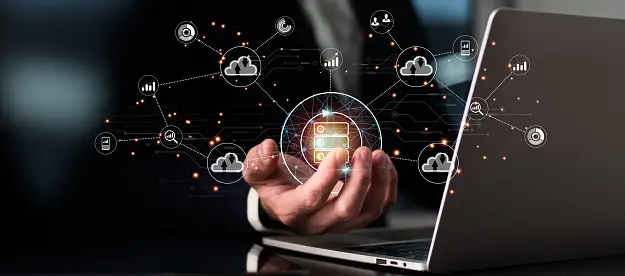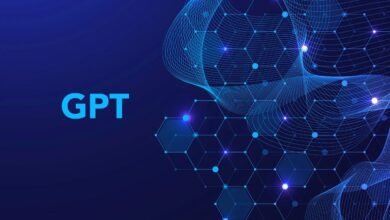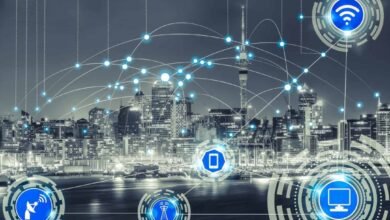A Beginner’s Guide: How to Choose the Right IoT Platform In 2024

A Beginner’s Guide: How to Choose the Right IoT Platform In 2024? Setting up Remote Patient Monitoring (RPM) in a healthcare setting in 2024 involves the integration of Internet of Things (IoT) devices, advanced sensors, and secure communication technologies to monitor patients’ health remotely. RPM is a crucial component of modern healthcare, enabling healthcare providers to track and manage patients’ conditions in real-time, leading to better outcomes and more efficient healthcare delivery. Here’s a detailed guide on how to set up Remote Patient Monitoring using IoT in 2024:
Table of Contents
ToggleInfrastructure Setup
Connectivity: Ensure robust and secure internet connectivity. This may involve leveraging high-speed broadband, cellular networks, or even emerging technologies like 5G for faster and more reliable connections.
Cloud Services: Utilize cloud platforms to store and process the vast amount of data generated by IoT devices. Cloud services also offer scalability and accessibility for healthcare professionals.
IoT Device Selection
Wearable Devices: Choose suitable wearable devices equipped with various sensors such as heart rate monitors, blood pressure monitors, ECG sensors, and temperature sensors.
Implantable Devices: For certain conditions, implantable IoT devices may be necessary. These could include pacemakers, glucose monitors, or other devices implanted within the body to monitor specific health parameters.
Home Monitoring Kits: Provide patients with user-friendly kits that include necessary IoT devices for monitoring, along with clear instructions on usage.
Data Security and Privacy
Encryption: Implement end-to-end encryption for data transmission to ensure the confidentiality and integrity of patient information.
Compliance: Adhere to healthcare data privacy regulations, such as HIPAA (Health Insurance Portability and Accountability Act) in the United States, to protect patient data.
Remote Monitoring Software
User-Friendly Interface: Develop or choose software with a user-friendly interface, enabling both healthcare professionals and patients to easily access and interpret the data.
Real-time Alerts: Implement an alert system that notifies healthcare providers of any abnormal readings or critical events, allowing for prompt intervention.
Integration with Electronic Health Records (EHR)
Interoperability: Ensure seamless integration with existing EHR systems to consolidate patient data and provide a comprehensive view of the patient’s health history.
Data Standardization: Adopt industry-standard data formats to facilitate interoperability between different systems and devices.
Read More: BlockChain Will Launch New Mining Operation With 5 nm Chips
Patient Onboarding and Education
Training Programs: Provide training to healthcare professionals and patients on how to use the devices and interpret the data.
Educational Materials: Create educational materials to help patients understand the importance of remote monitoring and how it benefits their overall health.
Telemedicine Integration
Video Conferencing: Integrate telemedicine features to allow healthcare providers to have virtual consultations with patients based on the data collected.
Prescription Management: Enable healthcare providers to remotely adjust medications based on the real-time data received.
Continuous Monitoring and Maintenance
Device Updates: Regularly update IoT devices with the latest firmware and software to enhance performance and address security vulnerabilities.
Technical Support: Provide a dedicated support system for patients and healthcare professionals to address any issues with the devices or software.
Feedback and Improvement
User Feedback: Collect feedback from both healthcare providers and patients to identify areas for improvement in the remote monitoring system.
Continuous Enhancement: Regularly update and improve the system based on feedback and advancements in technology.
By following these steps, healthcare providers can establish an effective and secure Remote Patient Monitoring system using IoT in 2024, ultimately improving patient outcomes and enhancing the overall quality of healthcare delivery. Certainly, let’s delve deeper into specific aspects of setting up Remote Patient Monitoring (RPM) in a healthcare setting using IoT:
Customized Monitoring Plans
Personalized Metrics: Tailor monitoring plans based on the patient’s medical condition, history, and treatment plan. Define specific thresholds for vital signs and other relevant parameters.
Adaptive Monitoring: Implement adaptive monitoring protocols that can be adjusted based on the patient’s evolving health needs.
Data Analytics and Artificial Intelligence (AI)
Predictive Analytics: Utilize AI algorithms to predict potential health issues by analyzing historical patient data.
Pattern Recognition: Implement machine learning models to identify patterns in patient data, aiding in early detection of deteriorating health.
Cybersecurity Measures
Firewall Protection: Set up robust firewalls to protect against unauthorized access to the IoT devices and the central monitoring system.
Regular Security Audits: Conduct regular security audits to identify vulnerabilities and ensure compliance with the latest security standards.
Remote Monitoring Command Center
Centralized Dashboard: Create a centralized dashboard for healthcare professionals to monitor multiple patients simultaneously.
Workflow Integration: Integrate the monitoring system into existing healthcare workflows to streamline the process for medical staff.
Scalability and Future-Proofing
Scalable Architecture: Design the system with scalability in mind to accommodate a growing number of monitored patients.
Compatibility: Ensure the infrastructure and devices are compatible with emerging technologies to future-proof the RPM system.
Patient Engagement Strategies
Feedback Mechanism: Implement mechanisms for patients to provide feedback on their experience with the remote monitoring system.
Motivational Features: Incorporate features that motivate patients to adhere to monitoring plans, such as rewards, educational content, or interactive interfaces.
Collaboration with Stakeholders
Healthcare Provider Collaboration: Foster collaboration with other healthcare providers to share insights and coordinate care for patients with multiple providers.
Integration with Pharmacy Services: Facilitate seamless communication between remote monitoring systems and pharmacy services for efficient medication management.
Regulatory Compliance and Certification
Certification Standards: Ensure that the RPM system complies with industry standards and has necessary certifications to meet regulatory requirements.
Audit Trails: Implement audit trails to track and record changes in patient data, supporting compliance and accountability.
Remote Rehabilitation and Wellness Programs
Rehabilitation Monitoring: Extend remote monitoring to include rehabilitation parameters for post-surgery or post-acute care patients.
Wellness Tracking: Incorporate features that support overall wellness, encouraging patients to maintain a healthy lifestyle beyond managing specific medical conditions.
Cost-Benefit Analysis
Economic Evaluation: Conduct a comprehensive cost-benefit analysis to demonstrate the economic advantages of remote patient monitoring, including potential reductions in hospital readmissions and emergency room visits.
Public Health Integration
Population Health Management: Use aggregated data from remote monitoring to contribute to population health management initiatives.
Epidemiological Surveillance: Leverage RPM data to enhance epidemiological surveillance, particularly during public health crises.
Implementing these additional considerations will contribute to a comprehensive and highly effective Remote Patient Monitoring system in 2024, optimizing patient care and healthcare delivery. Certainly, let’s continue to explore more aspects of setting up Remote Patient Monitoring (RPM) in a healthcare setting using IoT:
2]]Mobile Health (mHealth) Integration
Mobile Apps: Develop user-friendly mobile applications for patients to easily access their health data and receive alerts.
Mobile Device Compatibility: Ensure compatibility with a wide range of mobile devices to accommodate diverse patient preferences.
]Social Determinants of Health (SDOH) Considerations
Incorporate SDOH Data: Include social determinants of health data to provide a more holistic understanding of a patient’s health, influencing care plans accordingly.
Community Partnerships: Collaborate with community organizations to address social factors affecting patient well-being.
Remote Diagnostic Imaging
Connected Devices: Integrate IoT-enabled diagnostic imaging devices for remote monitoring of conditions such as wounds, skin conditions, or chronic diseases requiring imaging.
Real-time Imaging Analysis: Implement technologies for real-time analysis of diagnostic images, providing immediate insights to healthcare professionals.
Blockchain for Data Security
Decentralized Data Storage: Explore the use of blockchain for decentralized and secure storage of patient data, enhancing data integrity and security.
Smart Contracts: Implement smart contracts to automate and secure data-sharing agreements between different healthcare entities.
Patient Empowerment and Education
Self-Management Tools: Provide patients with tools for self-monitoring and self-management of their conditions.
Educational Resources: Develop a repository of educational resources to empower patients with knowledge about their health conditions and the benefits of remote monitoring.
Regimen Adherence Monitoring
Medication Adherence Sensors: Integrate sensors or smart packaging for medication to monitor and encourage adherence to prescribed regimens.
Behavioral Interventions: Implement behavioral interventions based on monitoring data to address non-adherence issues.
Tele-Rehabilitation Services
Virtual Therapy Sessions: Extend remote monitoring to include virtual rehabilitation sessions for patients recovering from surgeries or managing chronic conditions.
Wearable Rehabilitation Devices: Utilize wearable devices to monitor rehabilitation exercises and provide real-time feedback to patients.
Continuous Medical Education for Providers
Training Programs: Establish continuous medical education programs for healthcare providers to stay updated on the latest advancements in remote monitoring technologies and patient care strategies.
Certification Courses: Offer certification courses to healthcare professionals to ensure proficiency in utilizing RPM systems effectively.
Feedback Loops and Iterative Improvement
Continuous Feedback: Establish continuous feedback loops with both healthcare professionals and patients to identify areas for improvement.
Agile Development: Adopt an agile development approach to iteratively enhance the RPM system based on real-world usage and feedback.
Global Standards and Interoperability
Adherence to Standards: Ensure adherence to international standards for health data exchange and interoperability to facilitate global collaboration.
Cross-border Healthcare: Address regulatory challenges for cross-border healthcare delivery, allowing patients to be monitored seamlessly even when traveling.
By considering these additional elements, healthcare providers can create a comprehensive and adaptable Remote Patient Monitoring system in 2024, leveraging IoT technologies to enhance patient care, promote preventive measures, and improve overall healthcare outcomes. Certainly, let’s explore some more aspects related to setting up Remote Patient Monitoring (RPM) using IoT in a healthcare setting in 2024:
Human-Centric Design
User Experience (UX) Design: Prioritize human-centric design principles to ensure that both healthcare providers and patients find the remote monitoring system intuitive and easy to use.
Accessibility: Consider accessibility features to accommodate users with diverse needs, such as those with disabilities or elderly patients.
Cross-Platform Compatibility
Device Agnosticism: Design the system to be compatible with a variety of IoT devices and platforms, allowing for flexibility and accommodating patients who may have different monitoring equipment.
Patient Privacy Controls
Granular Privacy Settings: Provide patients with control over their data by implementing granular privacy settings, allowing them to choose who can access their health information.
Transparent Data Usage Policies: Clearly communicate data usage policies to patients, ensuring transparency and building trust.
Remote Mental Health Monitoring
Mental Health Sensors: Integrate sensors and questionnaires to monitor mental health indicators, allowing for the remote tracking of conditions like anxiety and depression.
Virtual Counseling Services: Include virtual counseling services to address mental health concerns and provide timely support.
Emergency Response Integration
Automated Emergency Alerts: Implement automated alerts that trigger emergency services or healthcare providers in critical situations.
Location Tracking: Include geolocation tracking to assist emergency responders in locating patients if needed.
Patient Support Communities
Online Support Groups: Facilitate the creation of online communities where patients with similar conditions can connect, share experiences, and provide mutual support.
Peer-to-Peer Communication: Enable peer-to-peer communication features to foster a sense of community among patients.
Integration with Wearable Fashion
Fashionable Wearables: Encourage the use of aesthetically pleasing and fashionable wearables to promote patient adherence to monitoring regimens.
Customizable Wearables: Provide customizable options for wearable devices to align with individual patient preferences.
Remote Rehabilitation Gamification
Gamified Exercises: Gamify rehabilitation exercises to make the process more engaging for patients, especially in the case of physical therapy.
Rewards System: Introduce a rewards system to incentivize patients to actively participate in their rehabilitation routines.
Tele-Health Coaching
Health Coaching Platforms: Implement tele-health coaching platforms to provide personalized coaching to patients in areas like lifestyle modification, nutrition, and stress management.
Behavioral Change Support: Offer behavioral change support through virtual coaching sessions to help patients adopt healthier habits.
Environmental Monitoring
Smart Home Integration: Explore the integration of IoT devices for monitoring environmental factors in a patient’s home that could impact their health, such as air quality and temperature.
Safety Alerts: Implement alerts for healthcare providers in case of detected environmental conditions that may pose a risk to the patient.
By incorporating these additional considerations, healthcare providers can create a dynamic and patient-centric Remote Patient Monitoring system, leveraging IoT to not only monitor traditional health metrics but also to address the holistic well-being of patients in diverse ways.
Conclusion
In conclusion, the implementation of Remote Patient Monitoring (RPM) using Internet of Things (IoT) in healthcare settings in 2024 represents a transformative approach to patient care. By leveraging advanced technologies, healthcare providers can extend their reach beyond traditional healthcare facilities, enabling real-time monitoring and proactive management of patients’ health. The comprehensive setup involves considerations such as infrastructure, device selection, data security, software integration, and continuous improvement strategies.
The integration of IoT in healthcare not only facilitates the remote tracking of vital signs but also extends to mental health monitoring, rehabilitation, and community building. This patient-centric approach not only enhances the quality of care but also empowers patients to actively participate in managing their health.
As the landscape of healthcare continues to evolve, the role of RPM in conjunction with IoT technologies will play a pivotal role in preventive care, early detection of health issues, and improving overall health outcomes. The future of healthcare lies in the seamless integration of innovative technologies to create a connected and patient-centered ecosystem.
FAQs : Right IoT Platform
Q1: How does Remote Patient Monitoring benefit healthcare providers?
A1: Remote Patient Monitoring allows healthcare providers to monitor patients’ health in real-time, leading to early detection of issues, reduced hospital admissions, and more efficient healthcare delivery. It also enables proactive interventions and personalized treatment plans.
Q2: How is patient privacy ensured in Remote Patient Monitoring?
A2: Patient privacy is safeguarded through measures like end-to-end encryption, granular privacy settings, and compliance with data protection regulations such as HIPAA. Transparent communication of data usage policies also contributes to maintaining patient trust.
Q3: Can RPM using IoT be used for mental health monitoring?
A3: Yes, RPM can include mental health monitoring through the integration of sensors and questionnaires. Virtual counseling services and online support communities can also be part of the system to address mental health concerns remotely.
Q4: What role does AI play in Remote Patient Monitoring?
A4: AI in RPM aids in predictive analytics, identifying patterns in patient data, and offering insights for early detection of health issues. Machine learning models can enhance the system’s capability to provide personalized and proactive healthcare.
Q5: How can RPM be integrated into existing healthcare workflows?
A5: RPM integration involves interoperability with Electronic Health Records (EHR), creating a centralized dashboard for healthcare professionals, and ensuring compatibility with existing healthcare systems. This seamless integration streamlines workflows for medical staff.
Q6: What considerations should be made for the scalability of an RPM system?
A6: Designing a scalable architecture, ensuring compatibility with emerging technologies, and conducting regular assessments of the system’s scalability are crucial considerations to accommodate a growing number of monitored patients.
Q7: How can patient engagement be enhanced in RPM?
A7: Patient engagement can be improved through user-friendly interfaces, educational resources, gamification of rehabilitation exercises, and the incorporation of social elements such as online support groups and peer-to-peer communication features.
Q8: What is the role of blockchain in securing patient data in RPM?
A8: Blockchain can be employed for decentralized and secure storage of patient data, enhancing data integrity and security. Smart contracts on blockchain can automate and secure data-sharing agreements between different healthcare entities.
Q9: How does RPM contribute to population health management?
A9: Aggregated data from RPM can contribute to population health management by providing insights into health trends and facilitating targeted interventions. It enhances epidemiological surveillance, particularly during public health crises.
Q10: What steps can be taken to ensure the RPM system remains up-to-date?
A10: Regular updates to IoT devices, continuous feedback mechanisms, and an agile development approach for iterative improvements are essential steps to ensure the RPM system remains current and aligned with evolving healthcare needs.











